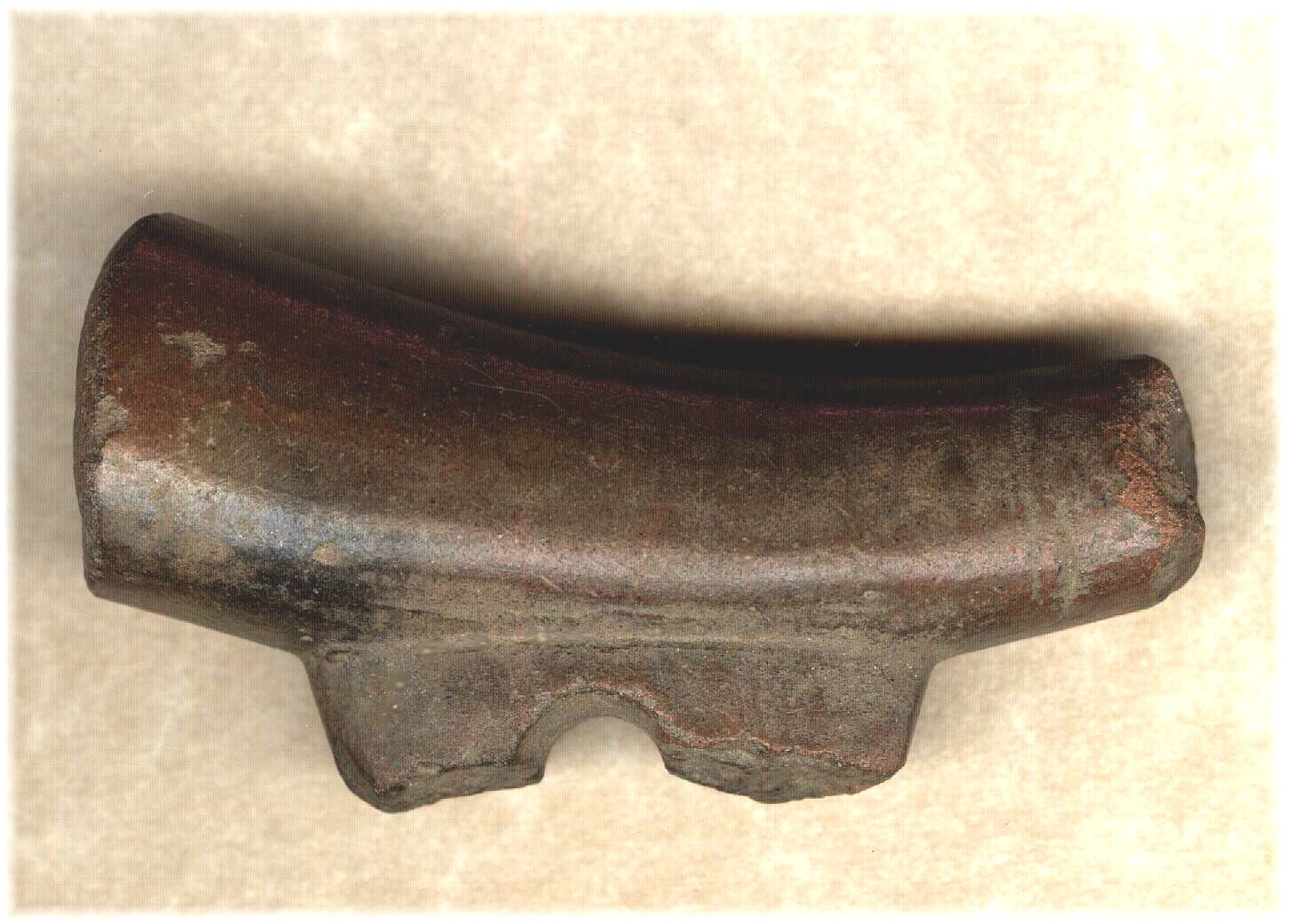-

A smoking pipe from western Riverside County, CA. Although the lower flange of this ceramic pipe has broken away, half of the drilled hole remains, suggesting that such pipes may have been carried hung around the neck. (ca 1600 AD)
Images
|
A smoking pipe from western Riverside County, CA. Although the lower flange of this ceramic pipe has broken away, half of the drilled hole remains, suggesting that such pipes may have been carried hung around the neck. (ca 1600 AD) |
|
Arrowpoints, such as this translucent chert specimen, are often referred to as "desert side-notched." Small, finely-made arrowheads like these are often found in late prehistoric or proto-historic sites in southern California, dating to after 1000 AD. |
|
Occasionally, excavations reveal buried artifact "features" (top). If relatively undisturbed, features such as this cobble stone and groundstone collection, give researchers a glimpse of the original layout of a site, perhaps revealing activity areas. Lower photo shows each artifact that made up the feature. Dated to the first millenium A.D. |
|
Although the use of machines in archaeological excavation is not unheard of, maintaining precise level by level digging control with a machine is another matter. Here, a Case Uniloader is shown dumping artifact bearing soils from a controlled trench excavation into a large screen (left). Recycled water is then used to wash the sandy soil through 1/8th inch mesh screen (below)--small enough to catch tiny artifacts such as beads. |
|
|
|
Crescentic chipped stone artifacts are rare finds. This one, recovered from a Los Angeles site, is about 3 inches across. Made of Monterey chert this unusual specimen somewhat resembles a bear. In many parts of ancient Europe the use of metal crescent-headed spears and arrows are well documented. However, the use of this interesting artifact is unknown. It is thought to date within the first millinium A.D. |
|
Stone bowls and pestles were used to process various types of foods, from seeds and roots, to meat. Shaped from hard granite rock, this bowl is roughly 8 inches across.
|
|
Typically, artifacts at most archaeological sites are buried within a site deposit referred to as "midden." Middens are generally created by windblown dirt, organic residue, carbon and ash from decades of campfires and human occupation. But sometimes the sites themselves get buried by geologic forces such as landslides or siltation. Here, the field crew used machines to remove over 12 feet of overburden just to reach the uppermost layer of the site. |
